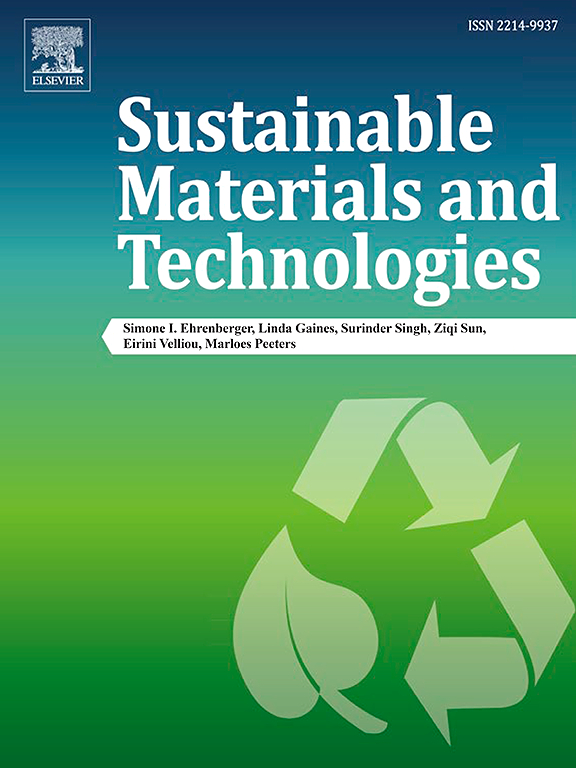Dry carbon nanotube wrapping of Ni-rich layered oxide cathodes for lithium-ion batteries
IF 8.6
2区 工程技术
Q1 ENERGY & FUELS
引用次数: 0
Abstract
The highly conductive carbon nanotubes (CNT) coating for the Ni-rich layered oxide cathode materials is proposed for use in lithium-ion batteries (LIBs). Unlike the conventional carbon coating method, a novel dry CNT coating technique onto the active material particle without heating is developed to avoid carbo-thermal reduction causing oxide deterioration by CO2 generation at high coating temperature. The shear stress of dry coating delivers sculpted short lengths of coating CNTs, which ensure high coating coverage as well as optimal electron transportation and distributions. Dry-tailored CNT coatings have multi-functions of mitigating surface degradation and improving electrical conductivity. With a small content of inactive conducting agents in the electrode, CNT-coated cathodes enhance cyclability and rate capability. Ni-rich LiNi0.89Co0.06Mn0.05O2 (NCM) powder with a small amount of CNT coating significantly improves electrochemical performance than that of conventional electrodes using the same amount of conductive additives such as super-C and CNT. The CNT coating on NCM also enables graphite (Gr||NCM) full cells to have a high specific energy density, which is improved from 284.7 to 308.7 Wh kg−1, simultaneously achieving an excellent energy retention of 75.0 % after 250 cycles. This research offers an efficient dry coating technique for achieving high energy density in LIBs.
求助全文
约1分钟内获得全文
求助全文
来源期刊

Sustainable Materials and Technologies
Energy-Renewable Energy, Sustainability and the Environment
CiteScore
13.40
自引率
4.20%
发文量
158
审稿时长
45 days
期刊介绍:
Sustainable Materials and Technologies (SM&T), an international, cross-disciplinary, fully open access journal published by Elsevier, focuses on original full-length research articles and reviews. It covers applied or fundamental science of nano-, micro-, meso-, and macro-scale aspects of materials and technologies for sustainable development. SM&T gives special attention to contributions that bridge the knowledge gap between materials and system designs.
 求助内容:
求助内容: 应助结果提醒方式:
应助结果提醒方式:


